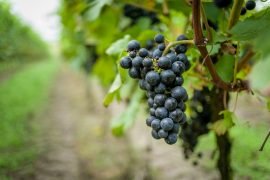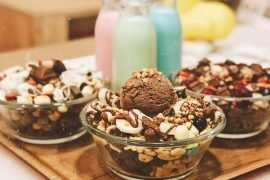[dropcap letter=”A”]
juice, either homemade or industrial, is not a healthy choice. This sentence is just as surprising as it is true: but hey, don’t they keep telling us that a freshly squeezed orange juice, every morning, is the cornerstone of a healthy breakfast? Yes, this is what we have been told, but like many things about food and nutrition, it is actually a lie. How can that be? Does this mean that fruit is not healthy, then? Far from it. Studies confirm that fruit is a healthy choice; in fact, we could say that it is an essential ingredient in every healthy diet plan; however, a fruit juice is not fruit, but only part of it. Well, a step by step explanation comes now.
The WHO advises that, at most, we can drink 25 grams of free sugars per day, in order to stay healthy. This is a recommendation of maximum objectives. In other words, this intake is totally superfluous and our best bet is reducing its intake as much as we can. Added sugars are directly linked to all kinds of health-related problems, like diabetis II, obesity or cardiovascular problems. But what do we mean by free sugars? These are those sugars that either we or industries add to food: sugar we add to coffee or yoghourt, sugar in tinned food, biscuits, soft drinks, sauces, etc. On the other hand, those sugars found naturally in food, like those in fruit, are not a problem. So, what is the problem with juices, since juices come from fruit?
A piece of fruit is always better than juice, either homemade or industrial
 The thing is that a fruit juice is not fruit, nor is sugar a juice, and despite their similarity to fruit, they do not behave similarly in our body. When we make juice, what we are actually doing is separating the fruit’s fibre –the pulp, the flesh– from its liquid part. As a consequence, the sugars, even those which are healthy because they blended in with the fibre, get released. Fibre slows down digestion of the small bowel, which prevents the totally undesirable blood sugar peaks: when these peaks take place too often, the body gradually develops resistance to insulin, a condition that precedes diabetes mellitus, among other problems, according to many studies. Excessive consumption of free sugars, of whatever origin, also causes swelling or accumulation of visceral fat (ill health markers). According to Medline, it is estimated that adults who take two orange juices per day put on 5 kilos each year. And how much sugar is there in a juice? A simple glass of orange juice contains around 29 grams of sugar!
The thing is that a fruit juice is not fruit, nor is sugar a juice, and despite their similarity to fruit, they do not behave similarly in our body. When we make juice, what we are actually doing is separating the fruit’s fibre –the pulp, the flesh– from its liquid part. As a consequence, the sugars, even those which are healthy because they blended in with the fibre, get released. Fibre slows down digestion of the small bowel, which prevents the totally undesirable blood sugar peaks: when these peaks take place too often, the body gradually develops resistance to insulin, a condition that precedes diabetes mellitus, among other problems, according to many studies. Excessive consumption of free sugars, of whatever origin, also causes swelling or accumulation of visceral fat (ill health markers). According to Medline, it is estimated that adults who take two orange juices per day put on 5 kilos each year. And how much sugar is there in a juice? A simple glass of orange juice contains around 29 grams of sugar!
Furthermore, fibre has another interesting effect, i.e. it has a faster satiating power. Eating five oranges is difficult, but even if we did that, we would be so full up that we would not feel like eating anything else. Drinking the juice of five oranges is relatively simple and, on top of that, we would then feel hungry enough to eat something else. Something similar happens with fruit shakes or smoothies: a fruit shake contains fibre but eating five pieces of fruit in one go is easy, and this is not ideal because it is not satiating –the lack of mastication sends messages to our brain that we feel sated and full up. If this is so, is drinking juice ever a good choice? When we do sport, drinking juice can be useful, to a certain extent. And even if we have it occasionally, this is not a problem, but it is always better to have a piece of fruit than a juice, either homemade or industrial.





















